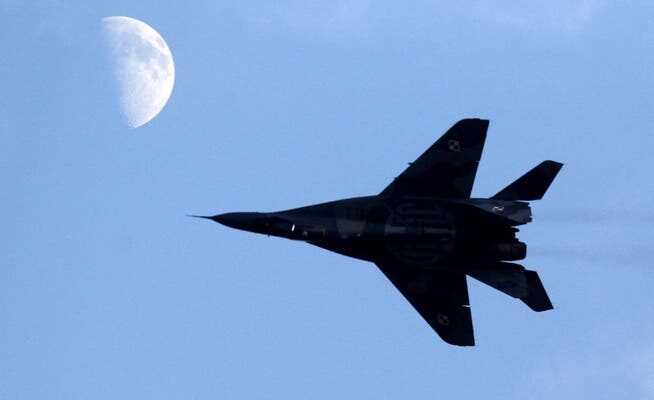The offered gift of its own fighter jets to Ukraine was a spectacular show of solidarity. But the limited military value does not justify the risk of an escalation with a nuclear power.
The air forces of both warring factions have so far played a subordinate role.
At first glance, the barter seemed fascinating: Poland is donating around two dozen Soviet-era MiG-29 fighter jets to Ukraine, whose pilots can fly these models. In return, Poland will receive newer F-16 jets from the USA, which can anyway be better integrated into NATO structures. Ukrainian President Zelensky vigorously campaigned for this reinforcement of his outdated air force. This is understandable, as the beleaguered Ukrainians could use any help against the overwhelming power of the Russian invaders.
The disappointment was all the greater when the USA dropped the idea on Wednesday. This is the second setback for Zelensky after the NATO countries rejected his urgent call for a no-fly zone to be set up over Ukraine.
However, the negative decision by NATO and the Americans is correct in both cases. Setting up and enforcing no-fly zones was a sensible measure in the 1990s during the Bosnian war and in Iraq. The zones served to protect the civilian population and could be enforced by the USA and its allies, since they could easily achieve absolute air superiority against the limited forces of Serbia and the Iraqi regime.
Not against a nuclear power
In Ukraine, on the other hand, NATO would have to fight for it first. To do this, it would have to shut down the air defense and air defense systems of nuclear power Russia – a direct military conflict with unforeseeable potential for escalation would be programmed.
The situation is similar with the delivery of Polish fighter planes. Poland had shown itself to be generous with its offer, but at the same time emphasized that the delivery would be a NATO act that all members would have to agree to. Accordingly, Poland did not want to hand over the aircraft on its own soil, but at the American Ramstein Air Force Base in Germany. The Americans, on the other hand, wanted the MiG-29 to be understood as a gift from Warsaw for which Poland itself was responsible. They refused to surrender at their air force base. So the two countries passed the risk of becoming the target of an escalation with a nuclear power back and forth like a hot potato.
In this respect, the unity that American Vice President Harris, who traveled to Poland on Thursday, demonstrated with Polish President Duda in Warsaw is quite credible. Basically, both countries had considered the delivery to be too risky.
The MiG-29s would not be decisive for the war
But not only that. The Pentagon classifies the military value of these fighter jets as relatively low. Much more important are defensive weapons such as mobile anti-aircraft and anti-tank missiles, thousands of which NATO countries have delivered to Ukraine in recent weeks.
This assessment is also plausible. The air forces of both warring factions have so far played a subordinate role. The conflict is primarily fought with heavy equipment on the ground. Russia had enough time and transport capacity before the attack to bring a huge arsenal of artillery, rocket launchers and tanks to the Ukrainian border and attack the country from three sides.
Therefore, the country can afford to use its own air force relatively cautiously and to minimize the risk of being shot down by Ukrainian air defense. Conversely, the question arises as to how and where the Ukrainians could have protected the donated jets from rapid destruction by Russian attacks – all military facilities in the country are within range of Russian missiles.
The free offer of Polish fighter jets was a spectacular symbol of Warsaw’s generosity and solidarity towards the neighboring country struggling for its existence. But it does not represent much more. Now it is all the more important to support Ukraine by continuing to supply weapons for the combat troops at the front, by providing financial and emergency aid for the population and by exerting maximum economic pressure on the aggressor.
